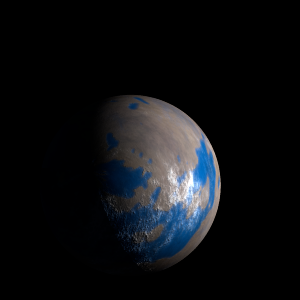|
|
Space Astro
|
Info for exoplanet "Dunuwy-m"
| Scientific (actual) data |
|---|
| Name | Kepler-1432 b |
| Planet status | Confirmed |
| Radius | 0.198 |
| Orbital period | 23.9109 |
| Discovered | 2016 |
| Updated | 2021-02-05 |
| Tconj | 2454980 |
| Publication | Announced on a website |
| Detection type | Primary Transit |
| Alternate names | 2MASS J19420580+4949463 b, K03116.01, KIC 11720424 b, KOI-3116 b, KOI-3116.01, WISE J194205.75+494946.4 b |
| Star name | Kepler-1432 |
| Right ascension | 295.52° |
| Declination | 49.83° |
| Mag j | 14.268 |
| Mag h | 13.95 |
| Mag k | 13.97 |
| Star distance | 1552 |
| Star metallicity | 0.02 |
| Star mass | 1.09 |
| Star radius | 1.13 |
| Star age | 3.47 |
| Star temperature | 6031 |
| Star alternate names | 2MASS J19420580+4949463, KIC 11720424, KOI-3116, WISE J194205.75+494946.4 |
| Wikipedia article | Kepler-1432 b |
Back
| |
| Fictional info (?) |
|---|
| Suggested name | Dunuwy-m |
| Planet type | Cold planet |
| The planet telescopically displays the complete range of phases, similar to Venus and the Moon, as it moves in its inner orbit relative to Kepler-1432, which reoccurs over the so-called synodic period approximately every 110 days.
A prominent result is the "great yellow spot", a giant storm that is known to have existed for centuries since it was first detected by scanner. |
| Atmosphere | Hydrogen | 87% |
| Ozone | 7.9% |
| Carbonyl sulfide | 3.9% |
| Ammonia | 0.088% |
| Sulfur dioxide | 0.0012% |
| Atmospheric pressure | 1.2 bar |
 |
| No known satellites |
| Google search for Dunuwy-m |
|
Website by Joachim Michaelis
|
|
|
|